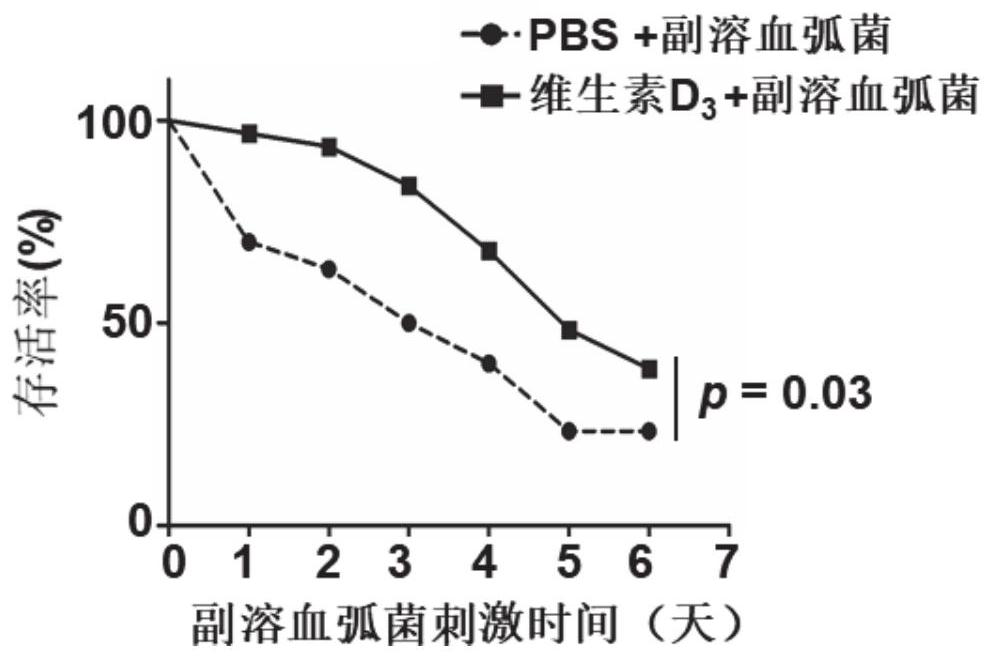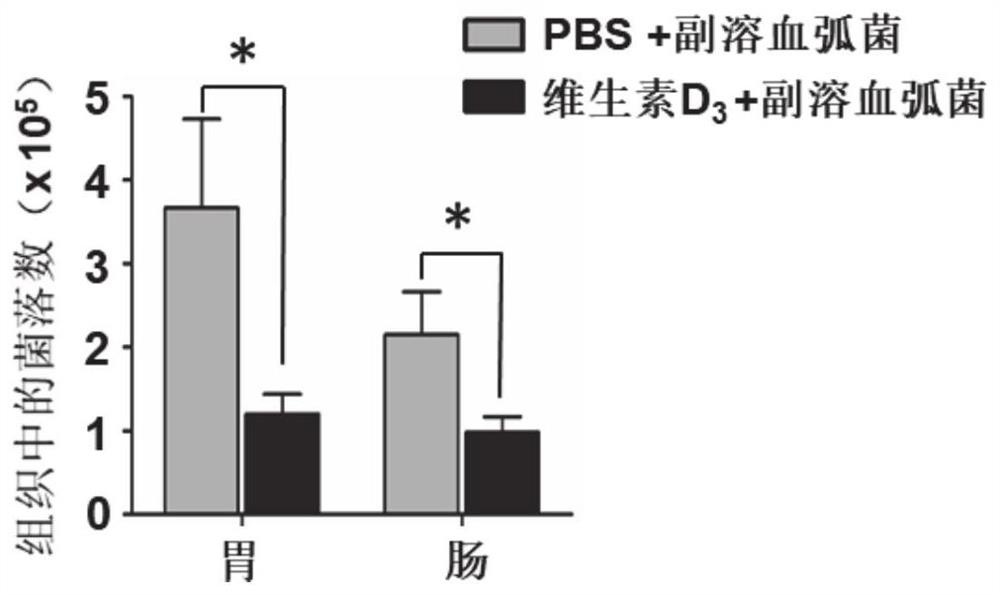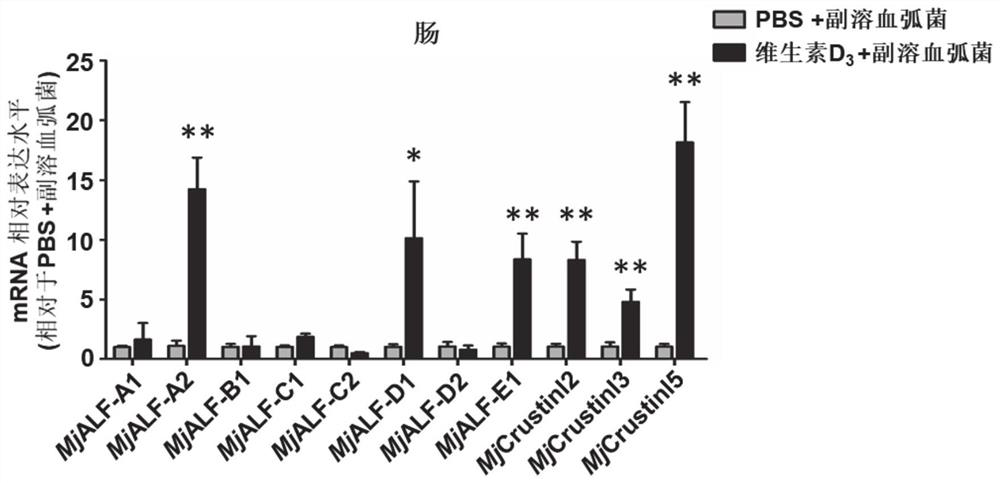Application of vitamin D3 to aquaculture
A technology for aquaculture and vitamins, applied in application, fish farming, climate change adaptation, etc., can solve the problems of drug-resistant Vibrio, antibiotic abuse, overuse, etc., to reduce the generation of drug-resistant bacteria and promote the expression level , the effect of improving the ability of infection
- Summary
- Abstract
- Description
- Claims
- Application Information
AI Technical Summary
Problems solved by technology
Method used
Image
Examples
Embodiment 1
[0105] The prawns were divided into two groups, the experimental group and the control group, each group was divided into 6 subgroups, and each subgroup had 10 P. japonicus. In the experimental group, each prawn was orally infected with 50 μL of Vibrio parahaemolyticus V.parahaemolyticus (about 1×10 8 CFU); in the control group, each prawn was orally fed with the same volume of 50 μL sterile PBS solution (2mM KH 2 PO 4 ,10mMNa 2 HPO 4 , 2.7mM KCl, 137mM NaCl, pH 7.4). After 24 hours, the gut contents of each prawn in the subgroup were collected, pooled, and immediately frozen in liquid nitrogen. Finally, 30 mg of intestinal contents were taken from each subgroup and submitted to the company for LC / MS metabolome analysis to analyze the small molecule metabolites in the intestinal contents of prawns. The small molecular metabolites in the experimental group orally infected with Vibrio parahaemolyticus and the control group fed with sterilized PBS were compared, and the diff...
Embodiment 2
[0107] Dissolve commercial vitamin D3 in ethanol at a concentration of 10 mg / mL, and dilute it 500 times in sterile PBS at a concentration of 20 μg / mL. Penaeus japonicus were divided into two groups with 35 prawns in each group. The experimental group was fed with vitamin D3, and each prawn was fed with 1 μg (50 μL, 20 μg / mL) of vitamin D3; the control group was fed with sterilized PBS, and each prawn was fed with 50 μL of PBS. After 24 hours, each prawn was orally infected with Vibrio parahaemolyticus (1×10 8 CFU). Then count the number of dead prawns every day. The experimental group fed vitamin D3 was compared with the control group fed sterilized PBS. After feeding vitamin D3 to prawns, feeding Vibrio parahaemolyticus to prawns can increase the survival rate of prawns by 20-30%.
Embodiment 3
[0109] Penaeus japonicus were divided into two groups with 10 prawns in each group. The experimental group was fed with vitamin D3, and each prawn was fed with 1 μg (50 μL, 20 μg / mL) of vitamin D3; the control group was fed with sterilized PBS, and each prawn was fed with 50 μL of PBS. After 24 hours, each prawn was orally infected with Vibrio parahaemolyticus (1×10 8 CFU). After 6 hours, the stomach and intestinal tract of the prawns were dissected, and the contents in the stomach and intestinal tract were separated, diluted with sterilized PBS, and spread on LB plates (1% NaCl, 1% peptone, 0.5% yeast extract , 1.5% agar, pH 7.0), count the number of colonies on the plate. After feeding vitamin D3 to prawns, oral infection with Vibrio parahaemolyticus can promote the clearance of bacteria in the digestive tract of prawns and reduce the number of Vibrio parahaemolyticus in the stomach and intestines of prawns by 50-70%.
PUM
 Login to View More
Login to View More Abstract
Description
Claims
Application Information
 Login to View More
Login to View More - R&D
- Intellectual Property
- Life Sciences
- Materials
- Tech Scout
- Unparalleled Data Quality
- Higher Quality Content
- 60% Fewer Hallucinations
Browse by: Latest US Patents, China's latest patents, Technical Efficacy Thesaurus, Application Domain, Technology Topic, Popular Technical Reports.
© 2025 PatSnap. All rights reserved.Legal|Privacy policy|Modern Slavery Act Transparency Statement|Sitemap|About US| Contact US: help@patsnap.com



